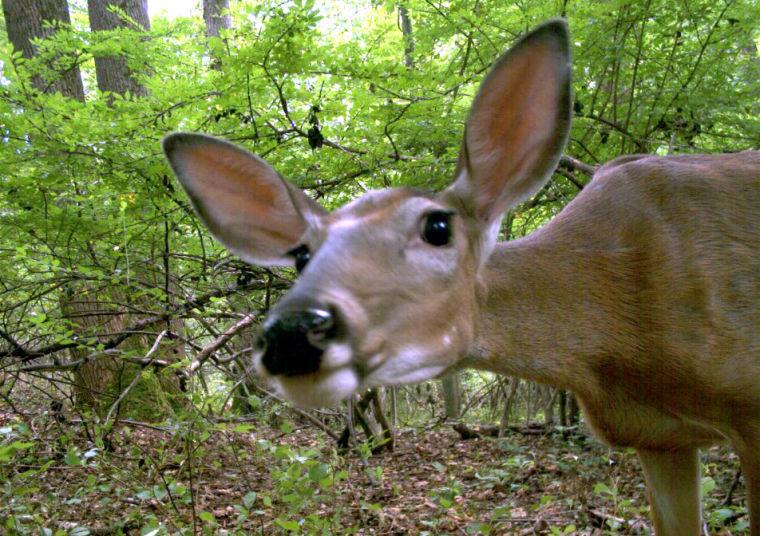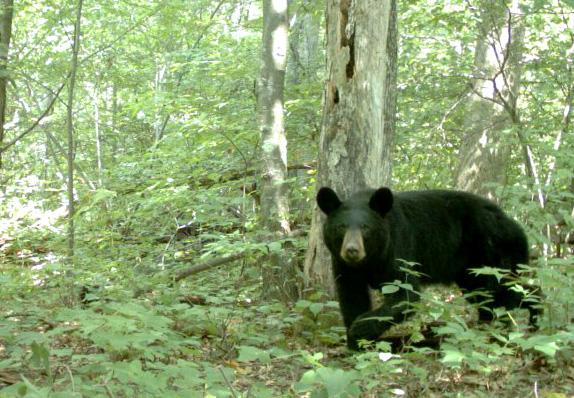People no longer need to be fully-trained scientists to have an impact on scientific research. With the growing popularity of a new move ment in scientific research called “citizen science,” any hobbyist with enough cu riosity can assist scientists in the gathering of data. Roland Kays, a forestry and environmental resources research associate professor, said a wealth of research owes a lot to the work of everyday citizens.
Kays, who conducts much of his research at the Nature Research Center in the Mu seum of Natural Sciences, has been working for on a project called EMammal which uti lizes data sent in from nearly 100 volunteers recruited by Kays last year. In total, with the help of these citizen sci entists, Kays and other scien tists involved with EMammal were able to survey informa tion gathered from more than 15,700 camera traps stationed at 750 survey sites stretching from North Carolina up to Maryland.
Kays’ specialty is in mam mals, and he said wanted to conduct a research project that would do for mammals what a decades-long rela tionship between the science community and amateur bird watching community has done for scientific stud ies on birds.
“Bird watchers are out there as citizen scientists, and they love to go out in the woods, look for animals, use their binoculars to look for birds, listen to the birds and write down what they see,” Kays said. “There has been a num ber of really awesome projects that some people have been involved in to harness this in terest that people have with birds.”
Recently, an older citizen science project called EBird celebrated collecting its hun dred millionth data point, setting a new record for the amount of data scientists have to work with.
According to Kays, until re cently mammalogists haven’t had such an opportunity so answering questions regard ing the populations of mam malian species has been dif ficult. However, Kays said he believes he found the solution to amateur participation in newer, more user-friendly camera traps.
“You can’t go out and see mammals very easily,” Kays said. “Most animal species see you coming and they just run away and so this is why we’re excited about us ing camera traps. People run camera traps to help survey mammals and these cameras are basically like the binocu lars of bird watching.”
With these tools, some of which cost up to $500, vol unteers are able to provide invaluable information that scientists can verify.
“One of the biggest down sides of citizen science is knowing how much you can trust the data because if you have untrained people col lecting the data, there is some risk that they’re not going to do it right,” Kays said. “And so, this was great because we have these voucher photo graphs. We can easily verify what we find.”
Michael Biggerstaff, a se nior in fisheries and wildlife science, helped set up cam era traps, captured photos of mammals and helped to verify animals for EMam mal last semester. Working in the game lands along South Mountain, Biggerstaff said it was one of the most exciting research projects he had ever been a part of.
“I have had experience with trail camera traps in the past and it’s kind of a thrill to see what kinds of animals you’re going to get. But also because [South Mountain] is close to my house but far enough away so there is some differences in the animals, I was just curious to see what kinds of animals were differ ent from what I was used to seeing,” Biggerstaff said. “For example, I got some black bear photos and I don’t get those near my house.”
Within 15 weeks, Bigger staff captured about 20,000 pictures such as shots of squirrels, white-tailed deer, raccoons, possums and chip munks, including photos of black bears playing with the cameras.
“When the bears would walk up, it was like they thought the cameras were toys,” Biggerstaff said. “But when something the size of a fully-grown black bear de cides to play with something, it’ll cause damage. So some times, my cameras would be barely hanging onto the tree and looking in a completely different direction.”
Kays said he had hoped to engage EMammal volun teers with something that he hoped would be fun ever since he came up with the idea of the project.
“I was starting to gear up to write some grants and then I saw that this guy, Bill Mcshea, at the Smithsonian had done a smaller Citizen Science camera trap project and I knew him because we had collaborated on some other stuff. So I contacted him and asked him how it worked, how people liked it and he said it worked great and people loved it,” Kays said. “I saw all the really great potential of it in terms of in volving people in science, getting people outdoors and, from the scientific perspec tive, having really good data.”
Currently, Kays and his team analyze the data gath ered from the camera traps that volunteers manage in order to discover how hiking and hunting affect mammals who live in the area. However, they have yet to report any of their findings.
Kays and his team said that they will continue to post updates on their Facebook page at www.facebook.com/ eMammal.
Camera traps catch a black bear. “When the black bears would walk up, it was like they thought the cameras were toys,” Biggerstaff said. “But when something the size of a fully-grown black bear decides to play with something, it’ll cause damage, so sometimes my cameras would be barely hanging onto the tree and looking in a completely different direction.”









